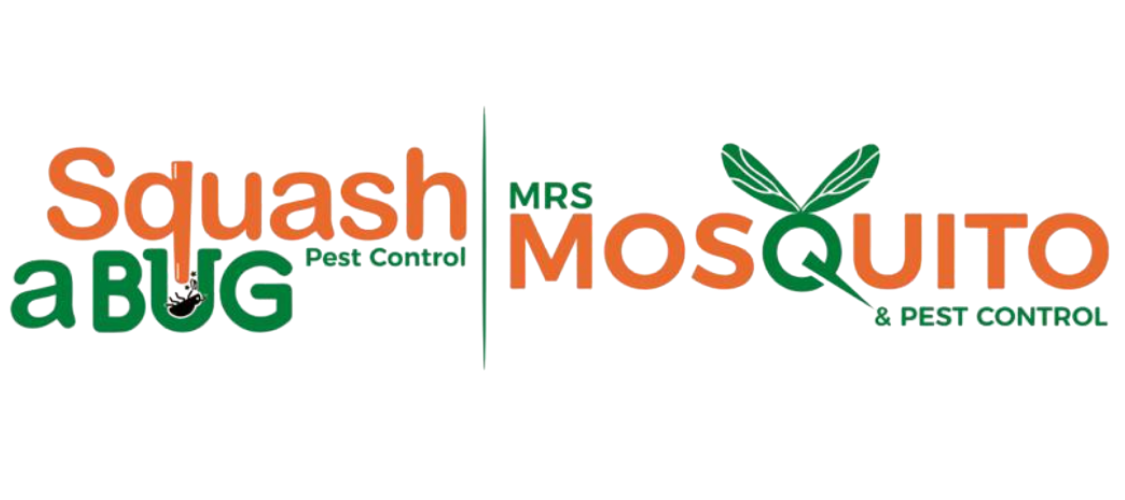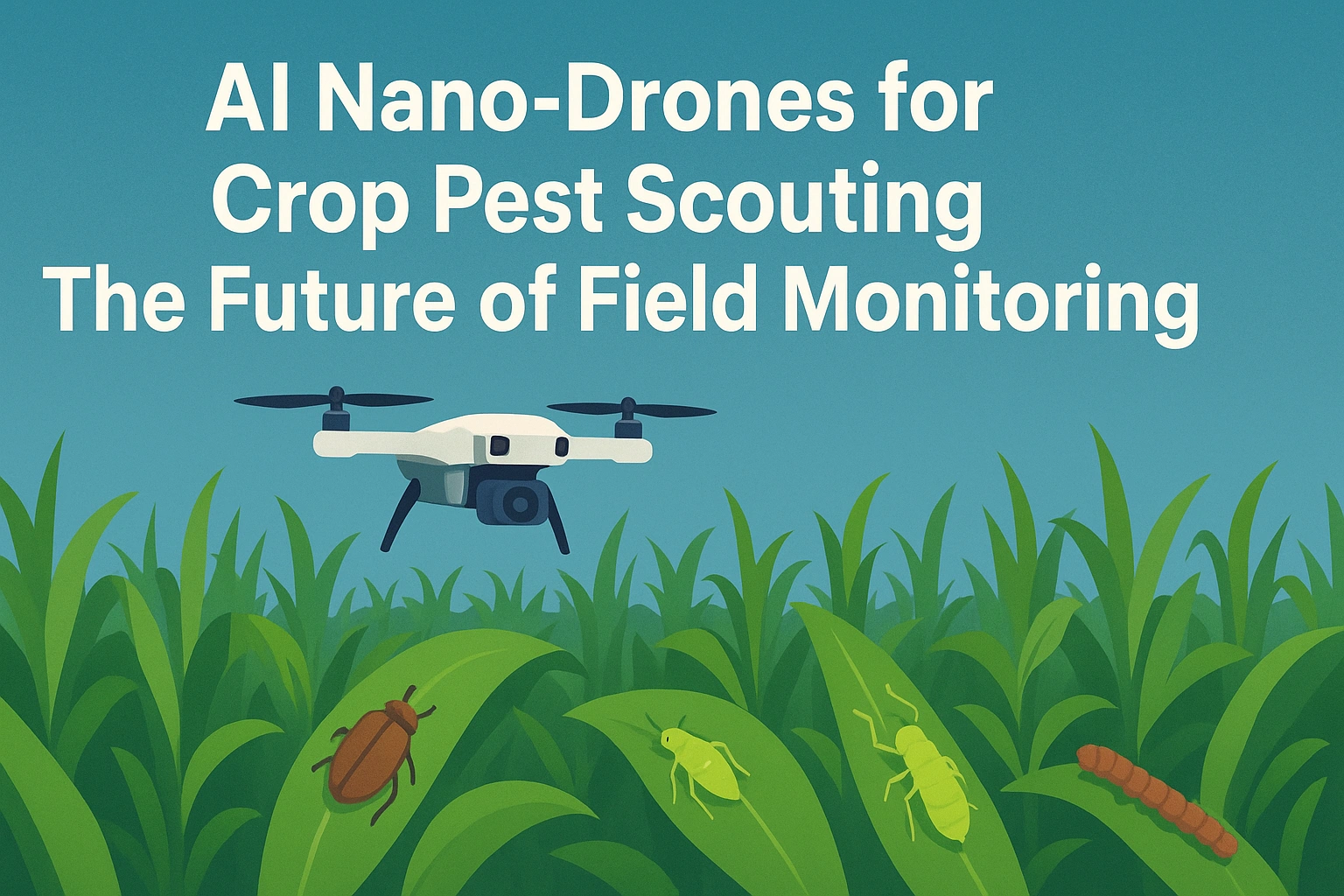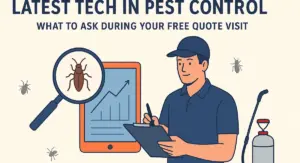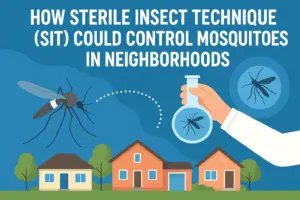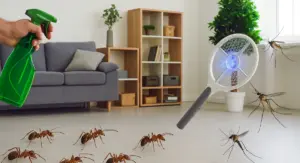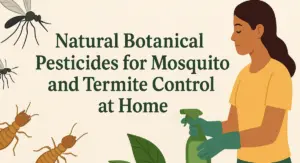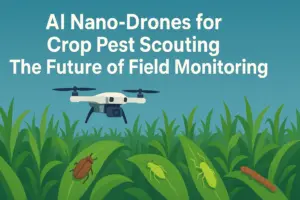In modern agriculture, pest control remains one of the most persistent challenges. Farmers have long relied on chemical pesticides and manual scouting methods, which are not only labor-intensive but also often inconsistent. However, the introduction of AI nano-drones for crop pest scouting is changing the game. These small but powerful machines are transforming how farmers detect, monitor, and respond to pest threats in the field.
As pest pressures increase due to changing climates and evolving insect behavior, technologies like AI in pest detection are becoming more important than ever. While traditional pest control methods still have their place, smart innovations like these nano-drones are paving the way for a more efficient, responsive, and data-driven future. If you’re also dealing with common pests at home, it might be helpful to understand the early signs of termite damage and how professionals handle infestations across different environments.
What Are AI Nano-Drones and How Do They Work?
Nano-drones are ultra-small flying robots equipped with sensors, cameras, and artificial intelligence software. When deployed over crop fields, they can scan plant leaves, detect pest infestations, and even differentiate between pest species based on trained image data. Unlike traditional drones, these miniaturized versions are designed to fly low and gather highly detailed imagery.
The AI onboard helps them:
- Recognize patterns of pest activity
- Spot subtle plant stress signals
- Flag disease presence before it spreads
- Map the field to identify pest hotspots
The best part is their speed and scale. Instead of covering a field manually, farmers can launch a swarm of drones to inspect acres in a fraction of the time.
Smarter Pest Control Begins With Early Detection
Catching pest infestations early is key to minimizing crop damage. Traditional scouting often misses early signs because it’s based on human observation. But AI nano-drones don’t miss much. They can fly daily, analyze thousands of plants, and detect even slight abnormalities.
These drones are especially helpful in identifying elusive pests like:
- Aphids
- Leafhoppers
- Whiteflies
- Mites
By using AI-powered image recognition, they can distinguish between natural leaf damage and insect-caused injury. This precision allows for quicker decisions on whether intervention is needed.
Incorporating this kind of technology doesn’t just save crops. It reduces the need for blanket pesticide spraying. This helps protect beneficial insects and aligns with sustainable agriculture goals.
How AI in Pest Detection Is Revolutionizing the Field
AI in pest detection goes far beyond just identifying bugs. It processes patterns across days, weeks, or entire growing seasons. These patterns are then used to forecast likely outbreaks and guide precision treatments.
Imagine this scenario:
A nano-drone fleet flies over a soybean field. The drones detect a growing number of beetle larvae in a specific area. Instead of spraying the entire field, farmers can target that zone only. This limits costs, pesticide use, and environmental damage.
In fact, precision approaches like these are gaining traction across agricultural industries. Meanwhile, the importance of accurate pest control isn’t limited to farms. Sectors like the hospitality industry also require reliable monitoring and prevention strategies to maintain standards.
Crop Pest Scouting Technology Gets Smarter With Every Flight
Unlike one-time-use tech tools, AI nano-drones improve over time. As they scan fields repeatedly, the AI software learns from past flights. This builds a customized pest profile for each farm, improving future detection accuracy.
Key improvements from repeated drone usage include:
- Better identification of field-specific pests
- Recognizing seasonal pest trends
- Adjusting flight patterns for more efficient coverage
These drones can also share data with cloud-based platforms. Farmers and agronomists access this information in real-time using mobile apps or dashboards. This kind of integration is where traditional scouting falls short. It’s no longer just about spotting pests. It’s about understanding the entire pest ecosystem on your land.
Affordability and Accessibility on the Horizon
While the concept of AI nano-drones may sound futuristic, they are becoming more accessible. As production costs decrease and adoption grows, many agriculture businesses, even small farms, are starting to invest.
Today’s nano-drones are lighter, cheaper, and smarter than early models. Some companies offer drone-as-a-service options, where farmers can rent or lease fleets during peak pest seasons. Others include bundled software platforms that help interpret the data collected.
As the technology spreads, it’s also being adapted for other pest control challenges. For instance, warehouse managers are applying effective warehouse pest control tips to ensure their stored goods remain safe from rodents and insects. The same philosophy of proactive monitoring and timely response applies.
Why This Matters for Sustainable Agriculture
One major benefit of crop pest scouting technology is that it supports more sustainable farming. Reducing the volume of pesticides not only lowers cost but also helps protect pollinators and local biodiversity.
Additionally, drone-based scouting helps farms meet modern agricultural standards, which are increasingly data-driven. Regulatory bodies and food safety organizations want proof of best practices. This is something drones can document with ease.
The data collected can also guide future planting decisions. If a field has recurring pest issues in one corner, farmers might plant resistant varieties in that area or rotate crops more effectively.
Challenges Still Remain
No technology is perfect, and AI nano-drones are still evolving. Some limitations include:
- Battery life for long scouting missions
- Wind resistance in open fields
- Data storage and transfer limitations in rural areas
- The need for skilled operators or technicians
However, as adoption grows and more feedback is gathered, these issues are being addressed rapidly.
The Future Looks Smart and Precise
In the next few years, we can expect nano-drones to become as common as tractors on large farms. With the ability to monitor pests 24/7, respond to outbreaks immediately, and reduce chemical use, these tools are reshaping pest control for the better.
Similar shifts are happening in homes and urban spaces too. Understanding how to identify and eliminate different ant species can greatly reduce infestation risks before they escalate. Whether in fields or in buildings, early detection is proving to be the most efficient form of defense.
Trending FAQs About AI Nano-Drones for Pest Control
Are AI nano-drones safe for crops and pollinators?
Yes. These drones don’t harm plants or insects. They observe and report. This allows for smarter pesticide application, which often helps pollinators thrive.
How accurate is AI in identifying pests?
AI software is trained on thousands of images and field reports. Its accuracy improves over time, often surpassing manual scouting in consistency and speed.
Can nano-drones be used in small farms?
Absolutely. Many drone providers offer scalable solutions. Even a small field can benefit from periodic drone scouting.
Is drone data easy to interpret for non-tech farmers?
Most platforms use visual dashboards with alerts and heatmaps. They are user-friendly and don’t require technical expertise.
What is the average cost of using AI nano-drones?
Costs vary, but entry-level services may start at a few hundred dollars per acre per season, depending on the frequency and type of data collected.
A Smarter Approach to Pest Management Is Here
The shift from traditional pest control to AI-powered solutions marks a big change in how we think about crop health. Farmers no longer have to wait for signs of damage before acting. With AI nano-drones, they can act early, precisely, and intelligently.
This kind of technology is not just about convenience. It’s about helping crops grow healthier, reducing environmental impact, and ensuring food supply is more reliable. As we’ve seen in different areas, from summer pest control tips to professional-grade prevention strategies, the trend is clear: prevention and early action are key.
Whether you manage a farm or a business space, the future of pest management is already flying overhead and it’s smaller than you might expect.
The Future of Pest Management Is in Your Hands
AI nano-drones are revolutionizing the way we approach nano drones pest control—making it faster, smarter, and more sustainable. From precision field monitoring to data-driven insights, the technology empowers farmers and businesses alike to stay one step ahead of infestations.
Don’t wait until pests take a toll on your crops or property. Embrace early detection and smarter pest management solutions today. Explore how Squash A Bug can help you leverage cutting-edge tools for effective, environmentally conscious pest control.
Take control now—visit our website at Squash A Bug and bring the future of pest management to your fields or business!
